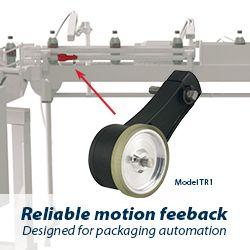Renice CFast Card for Factory Automation
Renice Industrial CFast Card is a compact memory card with SATAIII 6.0Gbps interface, compliant with the CFast 2.0 standard and ATA protocol. Designed with high performance, reliability and low power consumption, Renice CFast memory card are mainly used in industrial automation, embedded computing, public safety, aviation, medical and automotive fields, it can be a good storage device for next generation embedded applications.
Renice Industrial CFast Card is a compact memory card with SATAIII 6.0Gbps interface, compliant with the CFast 2.0 standard and ATA protocol. Designed with high performance, reliability and low power consumption, Renice CFast memory card are mainly used in industrial automation, embedded computing, public safety, aviation, medical and automotive fields, it can be a good storage device for next generation embedded applications.
Basic Information
Interface Standard: 7+17pin SATAIII 6.0Gb/s
Form Factor: 42.8mmX36.4mmX3.6mm (LxWxH)
Density: 16GB~512GB (MLC SSD); 8GB~256GB (SLC SSD)
Input Voltage: 3.3V (±5%)
Type: Industrial SSD
Performance
Sequential Data Read/Write: 520MB/450MB/s
Access Time: 0.1ms
MTBF: >3,000,000 hours @25C
Data Retention: JESD47 compliant
Flash Memory Management
Flash Management Algorithm: Static and dynamic wear-leveling, bad block management algorithm
Dynamic Power Management and SMART: √
Other Functions
NCQ: √
Trim: √
Power Failure Protect Function: √
Over Voltage Protect Function: √
Write Protect Function: Optional
Quick Erase: Optional
Environment
Temperature: Operation: -40°C ~+85°C; Storage: -55°C ~+95°C
Humidity: 10Hz-2000Hz, 16.4 G (X, Y, Z axis, 1 hour /axis)
Vibration: 10Hz-2000Hz, 16.4 G (X, Y, Z axis, 1 hour /axis)
Shock: Peak Acceleration: 1,500 G, 0.5ms(Half-sine wave, ±X,±Y,±Z axis, 1 time/axis); Peak Acceleration: 50 G, 11ms(Half-sine wave, ±X,±Y,±Z axis, 3 times/axis)
Featured Product

